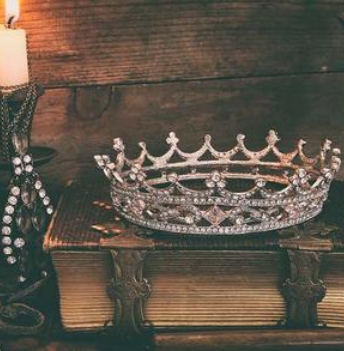
Juana La Loca
Share
Juana was born at the dusk of 15th century in Castille, one of the Kingdoms of modern Spain. At the time, her father was a dominant power broker in Europe and to secure his power, wed his second eldest daughter to Philip the Handsome, Archduke of Austria of the house of Hapsburg in October of 1496. She was then sixteen years of age and upon meeting the eighteen-year-old archduke, fell hopelessly obsessed with him. They were betrothed immediately as Philip had fallen in lust with his new bride.

Juana was well prepared to assume the role of a queen. She was tutored in several languages including Castilian, Leonese, Portuguese, Catalan and became fluent in French and Latin. She was also schooled in outdoor events such as archery, hawking and hunting. She also possessed the social skills of dancing and music, having played the harpsichord, guitar, and mono-chord.
The princess displayed signs of religious skepticism that would not be tolerated by her overzealous mother Isabella, who was the monarch responsible for the infamous Spanish Inquisition. Because Juana refused confession and communication with her mother, her guardians tried to sully her young reputation. Princess Juana was intelligent, head strong, emotional, prone to seriousness and solitude. Traits that would both serve and hinder her throughout her life.

Sixteenth century royal protocol was not always favorable to the young queen of Austria. Her husband's life was basically feasting, drinking, playing cards, and chasing women. This did not go over well with the young queen and set Juana into fits of rage and jealousy. It was obvious that the arranged marriage was not what she expected and took every opportunity to display her displeasure; she also experienced bouts of depression and fainting spells. Despite her husband's dalliances, she was still madly enamored with Philip.

Throughout the marriage, Juana gave Philip six children, four girls and two boys. The succession was guaranteed for the Hapsburg dynasty. The queen had more than done her duty. Meanwhile in Spain, Juana's older sister, Isabella and brother, Juan along with their children had died. This made Juana heiress to the Spanish Kingdoms. However, Philip and her father, Ferdinand, had other plans. The two created an unholy alliance to deprive Juana of her rights by having her imprisoned under pretense that she was unfit to rule. Ferdinand eventually departed for retirement in Aragon and left Philip to rule alone.
The year is 1506, Juana is with child and Philip at twenty-eight years of age, contracts and dies of typhoid fever. Rumor has it that Ferdinand was responsible for the death of his son-in-law; hearsay recounts that Philip was poisoned by Ferdinand to ensure no power would be shared. Upon the death of Philip, Ferdinand returned, against the will of Juana, as king of Spain. This arrangement endured until his death. After the demise of Ferdinand, the Empire of Spain and all its kingdoms were eventually given to Juana and her eldest son Charles who was still in Flanders with his siblings under the guardian ship of Philip’s sister, Margaret of Austria.

The death of her husband came as a great shock to queen Juana. She had been depicted by her mother as a religious rebel, by her husband and father as an emotional and unstable sovereign. This portrayal was then amplified by the uncontrollable anguish that seemed to topple her, now delicate, grip on reality. Her grief was so overwhelming that Juana could not assume any duties besides parading her husband's coffin from monastery to monastery on the road to his final burial place in Granada. It is said that she forbade any women of coming too close to the coffin and even avoided the shelter of nunneries. After the ceremony of internment was over, her father Ferdinand had his daughter imprisoned in the castle of Tordesillas where she gave birth to her last child, Catalina. She was only twenty-six years old.

This charade was kept up until the death of Ferdinand ten years later in 1516. Soon after her eldest son Charles and his sister Eleanor return to claim his rightful inheritance. Charles, upon seeing his mother for the first time in many years, declared "that the best and most suitable thing for you to do is to make sure that no person speaks with Her Majesty, for no good could come of it." Eventually her last child was betrothed to her cousin Juan III of Portugal. Juana spent her remaining days in a profound melancholy from which she rarely emerged. She had developed unusual practices such as sleeping on the floor, eating only bread and cheese, and not eating in front of anyone who could witness her. Juana outlived her husband by fifty years and was, perhaps unjustly, painted with the sobriquet "La Loca", the crazy woman. She eventually succumbed to death in 1555 at the age of seventy-five.

Juana's madness is widely disputed. She was manipulated by a self-interested father and a conspiring husband who together used her emotional and ebullient character to control and deprive her of her birth right as ruler of Spain. The false insinuations and mischievous propaganda helped to justify her imprisonment. A mild character flaw was parleyed into full blown insanity and incompetence. Her troubled life was not in vain. She successfully left an impressive legacy of European sovereigns that influenced the histories of France, Portugal, Denmark, Bohemia and Hungary.
If you enjoyed this tale, you might want to try some of Sir Walter Scott's latest offering, Princesa Juana snuff.
